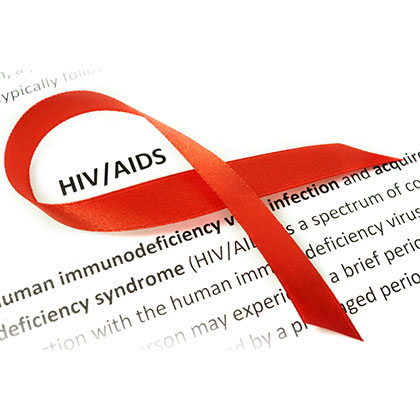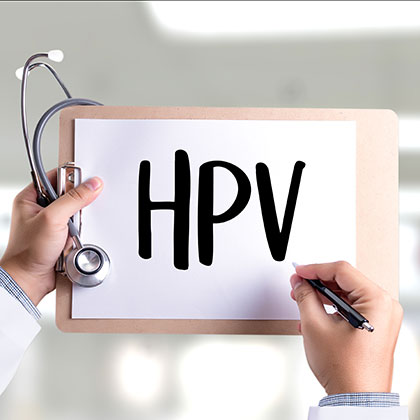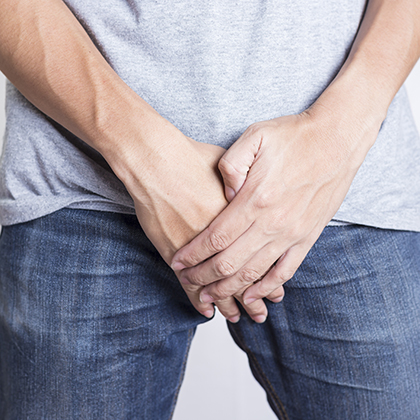
If you have pelvic inflammatory disease (PID), it means you have an infection of your internal reproductive organs, including the uterus (womb) and fallopian tubes, and sometimes also the ovaries. The infection is often transmitted to these organs and sometimes also to areas in the pelvis that surround them via the vagina or cervix (the neck of the uterus).
Some women may also develop abscesses in their ovaries and/or fallopian tubes as a result of having PID.
There are a number of symptoms associated with PID, though some women may not have any symptoms at all. Occasionally you can also have symptoms that aren’t typical of PID.
Most women with PID, however, have mild symptoms, such as:
-
Abdominal pain – this is the most common PID symptom
-
Lower back pain
-
Pain or discomfort during sex
-
Bleeding between periods or after having sex
-
Heavy and/or painful periods
-
An abnormal vaginal discharge
Occasionally women with PID may have more severe symptoms, including a high temperature, chills, severe pain, nausea and vomiting.
If your symptoms are mild they usually develop quite slowly. But sometimes the symptoms can develop quickly and make you feel really unwell in just a day or two. However even if you have one or more of the symptoms, you may not have PID, as the symptoms are often quite vague and can be confused with those of other conditions.
In severe cases, the symptoms could be a sign of something serious such as appendicitis or ectopic pregnancy (where a fertilised egg is implanted somewhere other than the uterus, often one of the fallopian tubes).
However, it’s important that you see your GP if you have any of the symptoms, as if you do have PID it should be treated as soon as possible (any delay in treatment may increase your risk of developing complications).
Are you at risk?
According to the NHS, while PID is considered a common condition, it’s not clear how many women in the UK are affected (i). This may be because some women with PID don’t have any symptoms, so it’s thought many cases probably go undiagnosed. In the US, however, more than a million women each year are diagnosed with PID, says the American College of Obstetricians and Gynecologists (ii).
There are several factors that can make you more likely to have PID, including:
-
Your age (the condition is most prevalent in sexually active women aged 15 - 24 years old)
-
How many sexual partners you’ve had (your risk becomes higher with each new sexual partner)
-
The age you started having sex (those who first had sex at a young age have a higher risk)
-
Not practising safer sex
-
Having a history of PID or sexually transmitted infections
What causes PID?
PID is usually caused by a bacterial infection. However, there are many different types of bacteria that can cause it, and experts admit it’s often difficult to determine exactly which bacteria are responsible from one case to another.
According to the NHS, in many cases PID is caused by sexually transmitted infections (STIs), the most common of which are chlamydia and gonorrhoea (and sometimes the two combined) (i).
Unfortunately, both of these STIs can cause vague or non-existent symptoms, which means in many cases they can go untreated. When that happens, the bacteria that cause them can travel into the upper genital tract, and PID can develop a few days or weeks later.
On the other hand, it’s not uncommon for the bacteria to stay in the cervix for some time, and you may only start to feel unwell when they travel into your uterus. This explains why it can sometimes take months for PID to develop after having sex with an infected partner.
Another type of STI caused by the mycoplasma genitalium (MG) bacterium can also cause PID. Like gonorrhoea and chlamydia, MG often causes no symptoms, so it too may frequently be undetected.
However, you don’t have to have a STI to develop PID. It can also be caused by other non-sexually transmitted bacteria found in the vagina that are usually harmless, including the organisms that are associated with bacterial vaginosis, a common vaginal infection. This can happen in certain circumstances, such as:
-
After having a baby or miscarriage
-
If you’ve had PID previously
-
If you’ve just had an intrauterine contraceptive device (IUD) inserted
-
If you’ve had a procedure where your cervix has been opened, such as an abortion or an inspection of your uterus
However, according to the NHS, the cause of the infection that leads to PID remains unknown in some cases (iii).
How is it treated?
PID can be difficult to diagnose. The first test you may have if your doctor suspects you have the infection is a pelvic examination, where you may have swabs taken from your vagina and cervix. These are sent away to be checked for the bacteria that may be causing the problem. But even if your result comes back negative, it doesn’t mean you don’t have PID, and you may be referred to a hospital for other tests to look for signs of infection or inflammation.
These additional tests can include a blood or urine test, or you may be advised to have an ultrasound scan to inspect your internal organs more closely. In some cases, a procedure called a laparoscopy is carried out under general anaesthetic, which is where a small telescope called a laparoscope is inserted into the abdomen through a small incision (keyhole surgery) to check for signs of PID.
You may also be advised to have a pregnancy test if your doctor suspects you have PID, as PID can have some of the same symptoms as an ectopic pregnancy.
Antibiotic treatment
PID can be treated easily with antibiotics if it’s diagnosed early enough, and if it’s confirmed you have the condition you’ll usually need to start your treatment immediately. Sometimes you may even be prescribed antibiotics before your test results have come back, as the earlier PID is treated, the more likely you’ll have a positive outcome. Most women with PID have to take one more types of antibiotics for at least two weeks, with treatment starting with a single antibiotic injection.
If you are or may be pregnant, it’s also important to let your doctor know, as some antibiotics should be avoided during pregnancy.
In some instances, women with PID are admitted to hospital for intravenous antibiotic treatment. This may happen if you have a very high temperature, if you have a suspected abscess, if you’re pregnant or if your symptoms don’t start to improve within a few days of starting your antibiotics. You should only need an operation if you have an abscess in one of your fallopian tubes and/or ovaries – thankfully this isn’t very common.
Sexual partners
According to Patient, about one in five women who have PID get the infection again, often within two years (iv). So, if you’re diagnosed with PID, any sexual partners you’ve had within six months of your symptoms starting should also be tested and treated to make sure you don’t get the infection from them again and that they don’t spread the infection to anyone else.
This is necessary even if you’re in a long-term relationship and neither you nor your partner has had sex with anyone else, as PID isn’t always caused by a STI. In the meantime, it’s important to avoid having sex until you and your partner have completed your treatment.
You can also get PID again if you don’t take your antibiotics properly or for long enough, or if you change your sexual partner but then fail to practise safer sex. Indeed, since STIs are a common cause of PID, if you want to prevent getting the infection it’s important to protect yourself by using a condom during sex.
It’s also a good idea to have a chlamydia test every year or whenever you change your sexual partner, especially if you’re aged 25 or younger. Click here to find out more about having a chlamydia test.
Are there any complications?
Most cases of PID that are treated successfully early enough don’t lead to any complications. But some can lead to more serious, long-term problems, the risk of which increases if you have repeated episodes of the infection.
Infertility
According to the NHS, one in 10 women with PID will experience infertility problems, meaning they will have difficulties getting pregnant. The risk is highest in those who didn’t have treatment as early as possible, and those who have had more than one episode of PID. Being treated successfully for the infection, however, has been shown to bring a woman’s chances of getting pregnant in line with the rest of the population.
Ectopic pregnancy
PID can cause scarring of the lining of the fallopian tubes, which can stop a fertilised egg from moving into the uterus. If the egg starts to grow inside the fallopian tube, it’s called an ectopic pregnancy. This can lead to internal bleeding that can be life threatening.
An ectopic pregnancy can be treated with medication to stop the egg growing. But if the pregnancy isn’t diagnosed early enough you may need surgery to remove the egg. According to Patient, if you’ve had PID and subsequently become pregnant, your chance of having an ectopic pregnancy is one in 10 (iv).
Pelvic pain
Some women with PID are affected by long-term pain in the pelvis and lower abdomen, including pain during sex. This can have a negative effect on your quality of life and may lead to further problems such as insomnia and low mood.
Pregnancy problems
Pregnant women with untreated PID may be affected by problems such as miscarriage, premature birth and stillbirth. Discover more about pregnancy and some of the complications involved.
Reiter’s syndrome
A rare complication of PID, this can cause arthritis (called reactive arthritis) and eye inflammation.
Perihepatitis
Also called Fitz-Hugh-Curtis syndrome, this is when PID causes inflammation of the tissue around the liver, causing sudden, severe pain in the upper right area just below your ribs.
Natural ways to support your immune system
While there aren’t any natural remedies or therapies proven to help directly with PID, there are natural ways of supporting your immune system while it’s fighting the virus during antibiotic treatment for the infection.
A healthy lifestyle is a good place to start making sure your immune system is as strong and healthy as possible. This means taking steps such as:
-
Eating a healthy balanced diet with at least five portions of fruit and vegetables every day
-
Staying as physically active as possible (aim for at least 150 minutes of moderate-intensity activity each week)
-
Keeping your weight within a healthy range
-
Drinking only in moderation (aim to limit yourself to a maximum of 14 units of alcohol each week)
-
Getting plenty of sleep
-
Avoiding exposure to cigarette smoke
-
Taking steps to tackle stress
There are also some nutritional supplements that may help support your immune system.
Live bacteria
Many experts believe live bacteria – also called ‘friendly’ bacteria – may help regulate and support the immune system (v). These live bacteria are thought to help restore the natural balance of bacteria in your gut. Try adding more probiotic foods and drinks to your diet, including sauerkraut, live yoghurt, kefir, miso and kombucha. Another way to top up your levels of live bacteria is to take a supplement.
High-strength multivitamin and mineral
As well as having a healthy diet, taking a high-strength multivitamin and mineral supplement may help make sure your immune system is getting all the nutrients it needs to stay as strong and effective as possible, especially when dealing with infections. For the best results, a multivitamin and mineral supplement should include good levels of zinc, which is thought to be important for immune function (vi) as well as vitamin D (vii).
Vitamins B and C
Both of these vitamins support the normal functioning of the immune system. But despite the fact that they’re found in a wide range of everyday foods, many of us may be running short. To make sure you’re getting the level of the B and C vitamins your immune system needs, you may want to consider taking a high-quality B complex supplement as well as a high-quality vitamin C supplement. You can also get both nutrients in good levels in a quality multivitamin and mineral formulation.
Elderberry juice
Another supplement that may be useful for immune health is elderberry extract as it contains powerful antioxidants called anthocyanins. There is also evidence to suggest black elderberry extract increases the body’s production of chemical messengers within the immune system called cytokines, suggesting it has an immune-supporting properties (viii).
Meanwhile if you need support for the abdominal and lower back pain that often accompanies PID you may want to consider trying a supplement called PEA. Also known as palmitoylethanolamide, PEA is a type of fatty acid made naturally by the body and found in all cells, tissues and fluids including the brain (it’s also found in foods such as soya beans, peanuts, eggs, flaxseed and milk). Described as an endocannbinoid-like chemical that belongs to a family of fatty acid compounds called amides (ix), PEA is an alternative to CBD, since both substances are thought to have similar properties including the ability to reduce pain and inflammation. However researchers suggest PEA is safer than CBD, since it has been studied more extensively and has a more robust safety profile (x) with no known side effects (ix).
Your body naturally increases its production of PEA when your cells are damaged or threatened. But in certain situations – such as when your body is experiencing chronic inflammation – the level of PEA in your cells drops (ix). When this happens, PEA supplements may be helpful. In fact a review of 16 clinical trials and meta-analysis of PEA suggests it does have analgesic actions – in other words it helps to relieve pain (xi).
With these steps, we hope to make your management of PID a little easier. For more information on a number of other common health conditions, feel free to visit our health library.
References:
-
Available online: https://www.nhs.uk/conditions/pelvic-inflammatory-disease-pid/
-
Available online: https://www.acog.org/womens-health/faqs/pelvic-inflammatory-disease
-
Available online: https://www.nhsinform.scot/illnesses-and-conditions/sexual-and-reproductive/pelvic-inflammatory-disease
-
Available online: https://patient.info/womens-health/pelvic-pain-in-women/pelvic-inflammatory-disease
-
Yah, F., Polk, D.B. Probiotics and immune health. Curr Opin Gastroenterol. (2011 Oct). ;27(6): 496–501. Available online: https://www.ncbi.nlm.nih.gov/pmc/articles/PMC4006993
Chiang, B.L., Sheih, Y.H., Wang, L.H., et al. Enhancing immunity by dietary consumption of a probiotic lactic acid bacterium (Bifidobacterium lactis HN019): optimization and definition of cellular immune responses. Eur J Clin Nutr. (2000). ;54:849-8551. Available online: https://www.ncbi.nlm.nih.gov/pubmed/11114680
Aziz. N., Bonavida B., Activation of Natural Killer Cells by Probiotics. For Immunopathol Dis Therap. 2016;7(102):41-55. Available online: http://www.dl.begellhouse.com/journals/1a654bf03faf67ac,2451af3842dace87,4072614f2000aab7.html -
Chandra, R.K. Trace element regulation of immunity and infection. J Am Coll Nutr. (1985). ;4:5-16. Available online: https://link.springer.com/chapter/10.1007/978-4-431-68120-5_23
Fraker, P.J., Gershwin, M.E., Good, R.A., et al. Interrelationships between zinc and immune function. Fed Proc. (1986). ;45:1474-1479. Available online: https://pubmed.ncbi.nlm.nih.gov/3485544/ -
Aranow, C. Vitamin D and the Immune System. J Investig Med. (2011 Aug). ;59(6):881-886. Available online: https://www.ncbi.nlm.nih.gov/pmc/articles/PMC3166406
-
Barak, V., Halerpin, T., Kalickman, I. The effect of Sambucol, a black elderberry-based, natural product, on the production of human cytokines: I. Inflammatory cytokines. Eur Cytokine Netw. (2001 Apr-Jun). ;12(2):290-6. Available online: https://www.ncbi.nlm.nih.gov/pubmed/11399518
-
Clayton P. et al., Palmitoylethanolamide: A Natural Compound for Health Management. Int J Mol Sci. 2021 May;22(10): 5305. Available online: https://www.ncbi.nlm.nih.gov/pmc/articles/PMC8157570/
-
Clayton P. et al., Palmitoylethanolamide: A Potential Alternative to Cannabidiol. J Diet Suppl. 2021 Nov;28;1-26. Available online: https://www.tandfonline.com/doi/full/10.1080/19390211.2021.2005733
-
Gabrielsson . L, Mattsson. S, Fowler. CJ. Palmitoylethanolamide for the treatment of pain: pharmacokinetics, safety and efficacy. Br J Clin Pharmacol. 2016 Oct;82(4): 932–942.Available online: https://www.ncbi.nlm.nih.gov/pmc/articles/PMC5094513/
Related Posts
Disclaimer: The information presented by Nature's Best is for informational purposes only. It is based on scientific studies (human, animal, or in vitro), clinical experience, or traditional usage as cited in each article. The results reported may not necessarily occur in all individuals. Self-treatment is not recommended for life-threatening conditions that require medical treatment under a doctor's care. For many of the conditions discussed, treatment with prescription or over the counter medication is also available. Consult your doctor, practitioner, and/or pharmacist for any health problem and before using any supplements or before making any changes in prescribed medications.

Christine
Christine Morgan has been a freelance health and wellbeing journalist for almost 20 years, having written for numerous publications including the Daily Mirror, S Magazine, Top Sante, Healthy, Woman & Home, Zest, Allergy, Healthy Times and Pregnancy & Birth; she has also edited several titles such as Women’ Health, Shine’s Real Health & Beauty and All About Health.
View More



